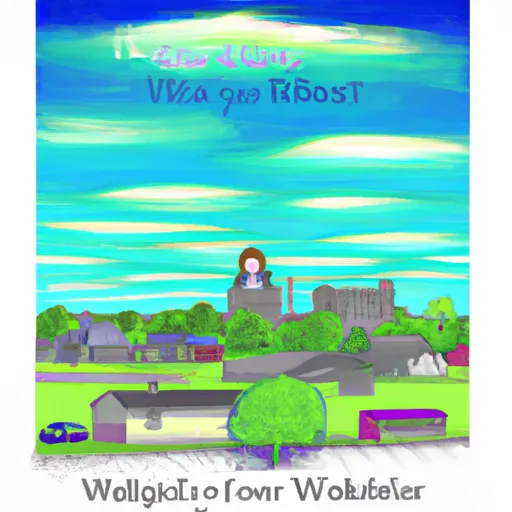-
 Snoflo Premium
Snoflo Premium
Get unlimited access to all our content
With no Ad interruptions! - Start Your Free Trial Login with existing account
Kimmell
Eden Index
Climate
7.6
•
Recreation
4.8
•
Community
•
Safeguard
4.7/10

Kimmell, Indiana is a small town located in Noble County. It experiences a humid continental climate characterized by four distinct seasons. Summers are generally warm with average temperatures ranging from the mid-70s to mid-80s Fahrenheit, while winters are cold with average temperatures ranging from the mid-20s to mid-30s Fahrenheit. Precipitation is evenly distributed throughout the year, with rainfall being the predominant form of precipitation.
Kimmell is situated near several lakes and bodies of water, including Sylvan Lake, Big Lake, and Skinner Lake. These hydrological constituents provide opportunities for various outdoor recreational activities such as fishing, boating, swimming, and water sports. Fishing enthusiasts can catch a variety of fish species, including bass, catfish, and crappie. The lakes also offer picturesque views and peaceful surroundings for nature lovers.
In addition to water-related activities, Kimmell and its surrounding areas provide opportunities for hiking, camping, and wildlife observation. The area boasts several parks and nature preserves, such as Chain O' Lakes State Park and Merry Lea Environmental Learning Center, which offer trails and educational programs for visitors to explore and learn about the local flora and fauna.
What is the Eden Index?
The Snoflo Eden Index serves as a comprehensive rating system for regions, evaluating their desirability through a holistic assessment of climate health, outdoor recreation opportunities, and natural disaster risk, acknowledging the profound impact of these factors on livability and well-being.
Climate Health Indicator (CHI): 7.6
Kimmell receives approximately
951mm of rain per year,
with humidity levels near 84%
and air temperatures averaging around
10°C.
Kimmell has a plant hardyness factor of
5, meaning
plants and agriculture in this region thrive during a short period during spring and early summer. Most
plants will die off during the colder winter months.
By considering the ideal temperature range, reliable water supplies, clean air, and stable seasonal rain or snowpacks, the Climate Health Indicator (CHI) underscores the significance of a healthy climate as the foundation for quality living.
A healthy climate is paramount for ensuring a high quality of life and livability in a region, fostering both physical well-being and environmental harmony. This can be characterized by ideal temperatures, reliable access to water supplies, clean air, and consistent seasonal rain or snowpacks.
Weather Forecast
Streamflow Conditions
Southeastern Lake Michigan
Area Rivers
Southeastern Lake Michigan
Snowpack Depths
Southeastern Lake Michigan
Reservoir Storage Capacity
Southeastern Lake Michigan
Groundwater Levels
Recreational Opportunity Index (ROI): 4.8
The Recreational Opportunity Index (ROI) recognizes the value of outdoor recreational options, such as parks, hiking trails, camping sites, and fishing spots, while acknowledging that climate plays a pivotal role in ensuring the comfort and consistency of these experiences.
Access to outdoor recreational opportunities, encompassing activities such as parks, hiking, camping, and fishing, is crucial for overall well-being, and the climate plays a pivotal role in enabling and enhancing these experiences, ensuring that individuals can engage in nature-based activities comfortably and consistently.
Camping Areas
| Campground | Campsites | Reservations | Toilets | Showers | Elevation |
|---|---|---|---|---|---|
| Muscatatuck | 35 | 718 ft | |||
| Kil-So-Quah - J. Edward Roush Lake | 90 | 807 ft | |||
| Salamonie State Lake - Lost Bridge West SRA | 250 | 794 ft | |||
| Madison City Park | 35 | 450 ft | |||
| Lost Bridge State Rec Area - Salamonie Lake | None | 794 ft | |||
| Clifty Falls State Park | 165 | 843 ft | |||
| Mt. Etna State Rec Area | None | 819 ft | |||
| Lake Clare Park Camp | 18 | 746 ft | |||
| Hardy Lake State Rec Area | 170 | 650 ft | |||
| Chain OLakes State Park | 410 | 956 ft |
Nearby Ski Areas
Catastrophe Safeguard Index (CSI):
The Catastrophe Safeguard Index (CSI) recognizes that natural disaster risk, encompassing floods, fires, hurricanes, and tornadoes, can drastically affect safety and the overall appeal of an area.
The level of natural disaster risk in a region significantly affects safety and the overall livability, with climate change amplifying these risks by potentially increasing the frequency and intensity of events like floods, fires, hurricanes, and tornadoes, thereby posing substantial challenges to community resilience and well-being.
Community Resilience Indicator (CRI):
The Community Resilience Indicator (CRI) recognizes that education, healthcare, and socioeconomics are crucial to the well-being of a region. The CRI acknowledges the profound impact of these elements on residents' overall quality of life. By evaluating educational resources, healthcare accessibility, and economic inclusivity, the index captures the essential aspects that contribute to a thriving community, fostering resident satisfaction, equity, and social cohesion.

